Picking up a guitar and strumming that very first chord is a moment many remember for a lifetime. The world of guitar chords is vast and rich, offering a palette of sounds that can express any emotion.
For beginner guitarists, the journey begins with understanding the basic chords and mastering the fretboard. But fret not! We're here to make this journey smoother, ensuring you start right.
Breaking Down Guitar Chord Charts and Diagrams
Guitar chord charts, often called chord diagrams, are like maps for beginner guitarists. These diagrams visually represent the fretboard, using horizontal lines to indicate the strings and vertical lines to indicate the frets.
Each position on this diagram corresponds to where you place your fingers on the fretboard. You'll often notice circles or dots; these indicate where your fingers should press down. An open circle right adjacent to the horizontal string means you play that string open without pressing it down with your fingers. An "X" right adjacent to the horizontal strings means you need to avoid playing, or mute, that string.
What Are the Best Chords for Beginners?
Starting with easy guitar chords is a great way to work on building your finger strength and dexterity --- and many common, popular chords are, in fact, relatively easy to master. Here are some of the best chords for beginner guitar players to start learning.
E Major (E)
![[RS+] The Best Beginner Guitar Chords to Start With SEO ARTICLE - emajor](http://staticctf.ubisoft.com/J3yJr34U2pZ2Ieem48Dwy9uqj5PNUQTn/3wNDlzsiEhUw0cLlYgQU9s/096c05795ef823a24a9b4fa85c9f7911/emaj.png)
The E Major chord is one of the most straightforward, making it great for beginners. To play the E Major chord, follow these steps:
-
Place your index finger (1st finger) on the third string, first fret.
-
Place your middle finger (2nd finger) on the fifth string, second fret.
-
Place your ring finger (3rd finger) on the fourth string, second fret.
-
Strum all the strings.
A Major (A)
![[RS+] The Best Beginner Guitar Chords to Start With SEO ARTICLE - amajor](http://staticctf.ubisoft.com/J3yJr34U2pZ2Ieem48Dwy9uqj5PNUQTn/2zcUjS3lYeI0ar8Jvyv9zN/38330ae411478833eeb9e44efda5b825/amaj.png)
The A Major chord has a very simple finger placement, making it easy and approachable for beginner guitar players. Just follow these steps:
-
Place your index finger on the fourth string, second fret.
-
Place your middle finger on the third string, second fret.
-
Place your ring finger on the second string, second fret.
-
Strum from the fifth string down, leaving out the low E string.
D Major (D)
![[RS+] The Best Beginner Guitar Chords to Start With SEO ARTICLE - dmajor](http://staticctf.ubisoft.com/J3yJr34U2pZ2Ieem48Dwy9uqj5PNUQTn/4NBbBsv5CXGgJGrIKYslbR/11ae85f2084db47f666958b9aa4ef2c8/dmak.png)
The D Major chord is a versatile chord with a simple finger placement. Play the D Major chord using these steps:
-
Place your index finger on the third string, second fret.
-
Place your middle finger on the first string, second fret.
-
Place your ring finger on the second string, third fret.
-
Strum from the fourth string down, leaving out the fifth and sixth strings.
G Major (G)
![[RS+] The Best Beginner Guitar Chords to Start With SEO ARTICLE - gmajor](http://staticctf.ubisoft.com/J3yJr34U2pZ2Ieem48Dwy9uqj5PNUQTn/6Jlt5Pf6aKD89N4GExSMwi/9e5a03ca04071961ada23eb488c75f6f/gmaj.png)
The G Major chord is another versatile, widely used chord with simple finger placements:
-
Place your index finger on the fifth string, second fret.
-
Place your middle finger on the sixth string, third fret.
-
Place your ring finger on the first string, third fret.
-
Strum all the strings.
C Major
![[RS+] The Best Beginner Guitar Chords to Start With SEO ARTICLE - cmajor](http://staticctf.ubisoft.com/J3yJr34U2pZ2Ieem48Dwy9uqj5PNUQTn/6drEsvXZ35a8nACf2ZcSM5/bbf3e3e03aa6dc1f15336aadcfab2b26/cmaj.png)
The C Major chord boasts straightforward finger placements that beginners can nail without too much strain:
-
Place your index finger on the second string, first fret.
-
Place your middle finger on the fourth string, second fret.
-
Place your ring finger on the fifth string, third fret.
-
Strum from the fifth string down, leaving out the low E string.
E Minor (Em)
![[RS+] The Best Beginner Guitar Chords to Start With SEO ARTICLE - eminor](http://staticctf.ubisoft.com/J3yJr34U2pZ2Ieem48Dwy9uqj5PNUQTn/KNrfGJTl7DCyx4FDTSYPx/2b3215d8f394ed5b9d31b13a72cb09e3/emin.png)
To play the E Minor chord, use the following steps:
-
Place your middle finger on the fifth string, second fret.
-
Place your ring finger on the fourth string, second fret.
-
Strum all the strings.
A Minor (Am)
![[RS+] The Best Beginner Guitar Chords to Start With SEO ARTICLE - aminor](http://staticctf.ubisoft.com/J3yJr34U2pZ2Ieem48Dwy9uqj5PNUQTn/64lf9mUXz5UImBB5Kp1PHJ/6f4be161017546bfe381fef1fc87b57d/amin.png)
The A Minor chord is a simple and common chord, with only one finger placement differing from the A Major chord:
-
Place your index finger on the second string, first fret.
-
Place your middle finger on the fourth string, second fret.
-
Place your ring finger on the third string, second fret.
-
Strum from the fifth string down, leaving out the low E string.
D Minor (Dm)
![[RS+] The Best Beginner Guitar Chords to Start With SEO ARTICLE - dminor](http://staticctf.ubisoft.com/J3yJr34U2pZ2Ieem48Dwy9uqj5PNUQTn/3oONCkMe0KlUqgEaGRy58T/3777034c2bfcda5366764f9e37b8936a/dmin.png)
To play the D Minor chord, follow these steps:
-
Place your index finger on the first string, first fret.
-
Place your middle finger on the third string, second fret.
-
Place your ring finger on the second string, third fret.
-
Strum from the fourth string down, leaving out the fifth and sixth strings.
When we refer to strings, we're numbering them from the thinnest to the thickest. The thinnest string (high E) is the 1st string, and the thickest string (low E) is the 6th string.
Starting with these basic chords will provide a foundation for playing a wide range of songs and help beginners transition to more complex chords and chord progressions as they progress.
What Are Open Chords?
Open chords are the bread and butter for beginner guitarists. These are chords played with one or more open strings. And the good news? Most popular songs you hear often use these!
Your fingers play a pivotal role in shaping the sound. While the index finger and middle finger often lead the way, don't neglect the ring finger and pinky. They're essential for some of the fuller, richer chords.
As we move forward, remember that every guitarist started with these basic steps. The beauty of the guitar lies in its ability to grow with you, offering new challenges and musical avenues as you progress.
Strumming Basics for the New Guitar Player
![[RS+] The Best Beginner Guitar Chords to Start With SEO ARTICLE - strumming basics](http://staticctf.ubisoft.com/J3yJr34U2pZ2Ieem48Dwy9uqj5PNUQTn/2AijZkaRuJbY6NH7ZrSFAg/023effd3919b7754bae2e14c8690d1e2/chord5.jpg)
Strumming isn't just about playing chords; it's about giving them life and rhythm. As you journey from a novice to an adept guitarist, your strumming patterns will evolve and become more sophisticated.
Every song has a rhythm, a heartbeat. Begin by practicing simple down-strokes with your picking hand, ensuring each strum resonates clearly. As you become comfortable, introduce up-strokes to add variety.
Your picking hand's position makes a world of difference. Ensure it's relaxed, floating just above the strings, ready to strum. The motion should come from your wrist, not your elbow, allowing for fluidity.
How To Learn Barre Chords and More Advanced Shapes
As you gain confidence with open chords, you might feel an itch to explore more. Enter barre chords --- these versatile chords allow you to play in any key, offering a wider palette of sounds:
What are barre chords? Unlike open chords, barre chords involve using one finger, usually the index, to press down multiple strings across a single fret. This "barre" allows the chord to be transposed up and down the fretboard.
The F major is a common starting point for many beginners experimenting with barre chords. It might seem challenging at first, but with practice, it becomes second nature. Another fundamental barre chord to grasp is the D minor, offering a soulful resonance to many tracks.
As you continue to master the basic barre shapes, explore different voicings and chord progressions. These allow you to play the same chord in various positions, offering nuanced sound differences.
What Are Some Tips for Smooth Chord Transitions?
Transitioning between chords can initially feel like a juggling act. It's not just about mastering individual chords but also about ensuring the flow between them is seamless. Here are some helpful tips:
-
Anchor Finger Technique: Some chord transitions allow for one or more fingers to remain in the same position or "anchor" on the fretboard. Recognize these anchors to simplify transitions.
-
Visualize Ahead: Before you move to the next chord, visualize its shape and positioning in your mind. This mental image can guide your fingers into place more swiftly.
-
Practice Slowly: It's tempting to rush through transitions, but starting slow and steady can cement muscle memory. As you grow more comfortable, gradually increase your speed.
Importance of Building Finger Strength and Dexterity
Just like any other skill, playing the guitar requires not only knowledge but also physical conditioning. Regularly practice finger stretching and strengthening exercises. This not only boosts dexterity but also aids in playing more complex chord shapes.
Scales are excellent for building finger strength. They also help in understanding music theory, laying the foundation for creating solos later on. Like any muscle, your fingers need consistent training to become agile and strong. Ensure you set aside dedicated time daily, even if it's just a few minutes.
Have Fun
Every guitar player's journey is unique, but the chords and techniques covered in this guide are universal stepping stones. The world of guitar is expansive, from the acoustic melodies to the electric guitar riffs that have defined generations. With practice and perseverance, soon, the fretboard will feel like an extension of yourself.
Remember, the guitar isn't just an instrument; it's a lifelong companion in your musical journey and a way to express yourself through music. So, keep those fingers moving, cherish every chord, and most importantly, enjoy every moment. After all, music is not just about precision; it's about passion.
So what are you waiting for? Grab your guitar, and start practicing. As you advance, you may want to challenge yourself even further. This is where Rocksmith+ comes in, giving you a platform to practice chords and scales and play real music with more than 6000 songs in their library.
Sources:
How to Read Guitar Chord Charts | Fender
How To Play Open Chords On Guitar | FuelRocks
What Is Rhythm In Music? A Complete Guide | Hello Music Theory









